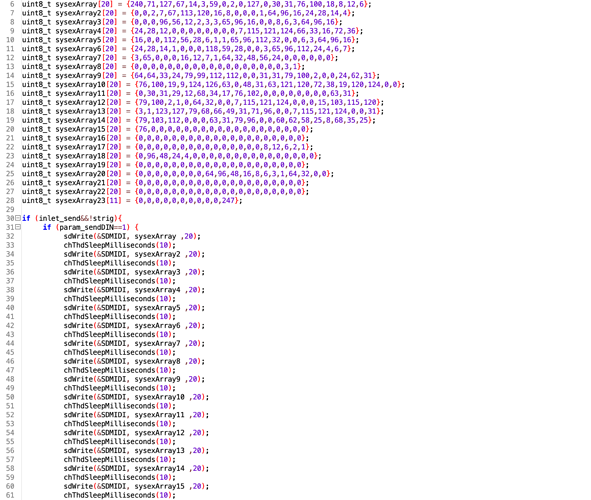Hi folks,
I would like to send a long SYSEX message to a USB controller.
The array is 451 characters long. If I send it in one shot, I obviously get a
"usb host midi output ringbuffer overflow"
Do you know a simple way to "split" it in some way.
I'm not a big C coder so I just tested by splitting the entire array manually with multiples arrays of 20 with a 10 ms pause between each send. It works but it's too long to code.
Is there a way I can code a pause every 20 characters of the array basically?
Thanks for your help.



